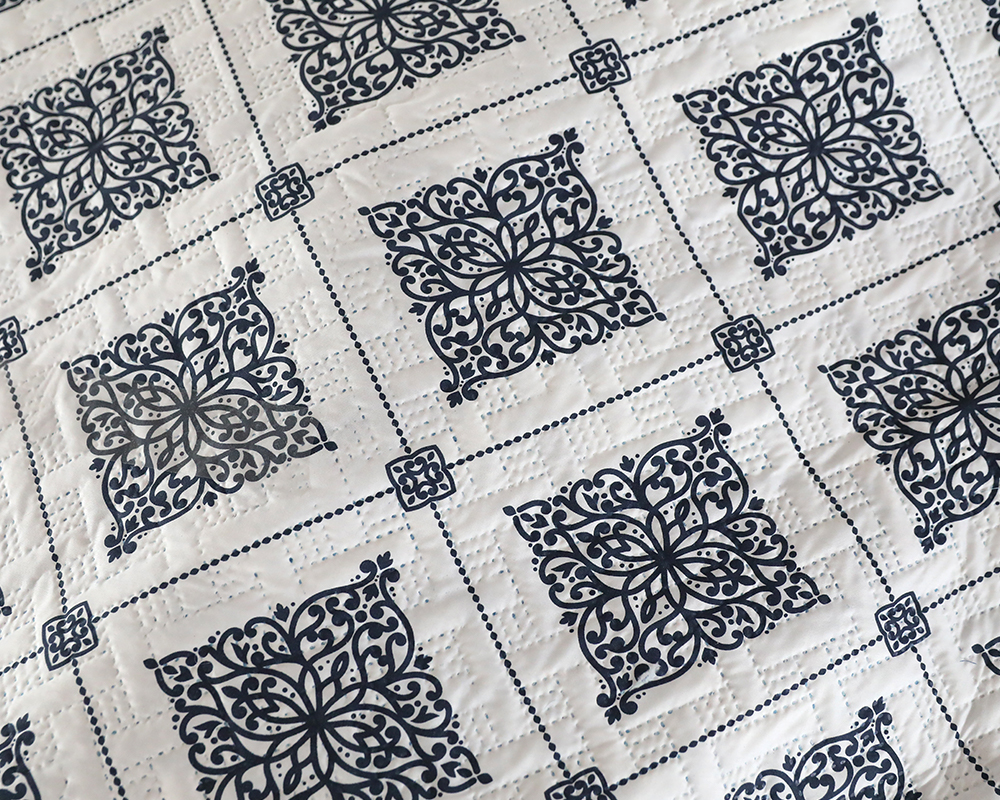Search...
Printed Ultrasonic Fabric has significant advantages in efficiency and environmental protection, promoting the development of the textile industry in a more efficient and sustainable direction.
Traditional fabric processing technology usually requires multiple links, such as cutting, sewing, printing and dyeing, etc. Ultrasonic technology, on the other hand, can accomplish multiple tasks in fewer steps. For example, ultrasonic welding enables fabrics to be joined directly without the use of traditional stitches or glue. This efficient processing method not only reduces production time, but also reduces labor and equipment investment.
Ultrasonic technology has a high degree of precision and can achieve complex pattern embossing, printing or cutting operations on fabrics. Compared with traditional manual processes, ultrasonic technology can reduce errors and waste in production, improve production consistency and stability, and thereby improve overall production efficiency.
Traditional fabric processing is often accompanied by a large amount of material waste, especially during the cutting process. Ultrasonic technology enables precise processing without generating too much waste, especially when welding and embossing, reducing the generation of waste fabrics. In this way, it not only improves the efficiency of material use, but also reduces production costs.
Ultrasonic equipment can directly process fabrics through high-frequency vibration, eliminating the need for heating and drying processes in traditional processes. Compared with traditional printing and dyeing, cooking and drying processes, ultrasonic processing is more efficient in energy consumption and helps save energy.
The ultrasonic machining process can quickly respond to changing production needs and is particularly suitable for small batch production or customized products. Its high efficiency allows the production line to be more flexible in response to different orders and market demand changes.

Traditional printing, dyeing and processing often require a large amount of chemical dyes, additives, glue and other chemicals. These substances cause great pollution to the environment. Ultrasonic technology generally does not require these chemicals. The process of ultrasonic welding, embossing or printing can be processed directly on the fabric, avoiding the use of chemicals, thereby significantly reducing the negative impact on the environment.
Traditional dyeing and printing processes usually require large amounts of water for cleaning and rinsing, while the use of ultrasonic technology greatly reduces water consumption. Since dyes and cleaning processes are not required, water requirements are significantly reduced throughout the production process, thus reducing the burden on water resources.
Ultrasonic technology reduces waste in production through precise processing. For example, ultrasonic embossing can create exquisite patterns on fabrics without using traditional chemical solutions for printing and dyeing, which not only reduces the use of harmful substances but also reduces waste generation. Overall, the production process of ultrasonic fabrics is more environmentally friendly and in line with the concept of sustainable development.
Compared with traditional textile processes (such as high-temperature melting, steaming, etc.), the processing of ultrasonic technology consumes less energy. This not only reduces dependence on fossil energy but also reduces greenhouse gas emissions.
Ultrasonically welded fabrics tend to have stronger structural integrity, reducing the need to use other glues or chemical additives, which helps improve the recyclability of the fabric. When ultrasonic fabrics are no longer used, they are easier to recycle and reuse, in line with the concept of modern circular economy.
Printed Ultrasonic Fabric significantly improves production efficiency and reduces resource consumption and environmental pollution during the production process by integrating ultrasonic technology with traditional fabric printing processes. In terms of efficiency, it can improve production efficiency by reducing process steps, saving time and materials; in terms of environmental protection, it reduces chemical use, saves water resources, reduces waste, and improves energy utilization. As environmental regulations become increasingly stringent and market demand for sustainable products increases, the advantages of ultrasonic fabric technology will be further highlighted and become a highlight in the textile industry.

 English
English
 中文简体
中文简体
 Español
Español





.jpg?imageView2/2/format/jp2)






